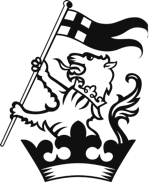Wellington College has the most remarkable and unique history. Perhaps more than any other school in the country, the entire institution is dripping with the traditions, nomenclature and iconography of our original foundation, and we remain incredibly proud to be the national memorial to “the greatest man this country has ever produced”. These are not my words, but those of Queen Victoria who, along with her husband, Prince Albert, played such an integral role in the foundation of Wellington College.
And it is a uniquely masculine history: most of our Houses are named after men who fought with the Iron Duke at Waterloo; one of the school’s mottos is HEROUM FILII – “The sons of heroes” – referring to the original Foundationers, the orphaned sons of army officers who were educated for free at Wellington, indeed, from 1859 to 1975 the College only educated boys; there are paintings and statues of men in every corner of the College site (the statues, you may have noticed, have been removed for restoration); and the very position which I hold has a uniquely masculine ring to it – ‘Master’. Wellington has had 15 Heads all of whom have been men.
In a few weeks’ time Wellingtonians will run the Kinglseys, a cross country race named after Reverend Charles Kingsley, author of The Water-Babies, Rector of Eversley and later Chaplain to Queen Victoria from 1859 onwards, the year in which Wellington College first opened its doors to boys. And at Speech Day, the Earl of Derby’s Gift will be presented, named after Edward Stanley, 14th Earl of Derby and Prime Minister at the time of the Iron Duke’s death. It was Edward Stanley who first proposed to Queen Victoria the idea of a school for the orphan sons of officers as a national monument to the 1st Duke of Wellington. We also have a Stanley House.
For the past 50 years, however, the College has seen a number of changes which, quite rightly, have seen a growing number of girls and women having an increasing influence on the College community and the education we offer. The Apsley was opened in September 1975 as a Sixth Form House for girls – there were only eight of them in the original Lower Sixth cohort. As well as pioneering pupils, the College also benefited from pioneering women who took the brave decision in the 1980s or early 1990s to come and work in school where the number of female teachers could be counted on the fingers of one hand.
Towards the end of Hugh Monro’s tenure as Wellington’s 12th Master the Common Room was itself of the opinion that the school should become fully coeducational and one of Sir Anthony Seldon’s very first announcements upon his arrival in January 2006 was that the College was to welcome girls at 13+ with immediate effect. The Anglesey, the Combermere, the Hopetoun and the Orange all converted into girls’ Houses over the ensuing years and, by 2008, Wellington College had female pupils in every year group.
As I type this Master’s Voice, there are currently 159 teaching staff at Wellington, 71 of whom are now women, and it is particularly pleasing to see that many of our academic departments, which might traditionally have been seen as the bastions of boys, are now being led by women: we have a female Head of Chemistry, a female Head of Computer Science, a female Head of Economics and a female Head of Science, Technology and Engineering. I am also proud to be supported by the first female Second Master in the history of the College in Cressida Henderson and what a magnificent job she is doing.
As the world marked International Women’s Day yesterday, it is only right that we, too, pay our respects to all the female Wellingtonians, teachers and members of College Staff who make the College such a wonderful place to live and to learn in 2020. There is no doubt that, thanks to their contributions, efforts and leadership, Wellington College is in a far stronger place to educate the leaders of tomorrow – both male and female – and it is why one of my strategic goals for the next five years is to complete the journey towards genuinely balanced and equitable coeducation at the school.
We are rightly proud of our uniquely masculine history, but we should be just as proud of the uniquely coeducational future which awaits this remarkable school. Perhaps now is the time to re-write the school motto as HEROUM FILII FILIAEQUE – “The sons and daughters of heroes”?





